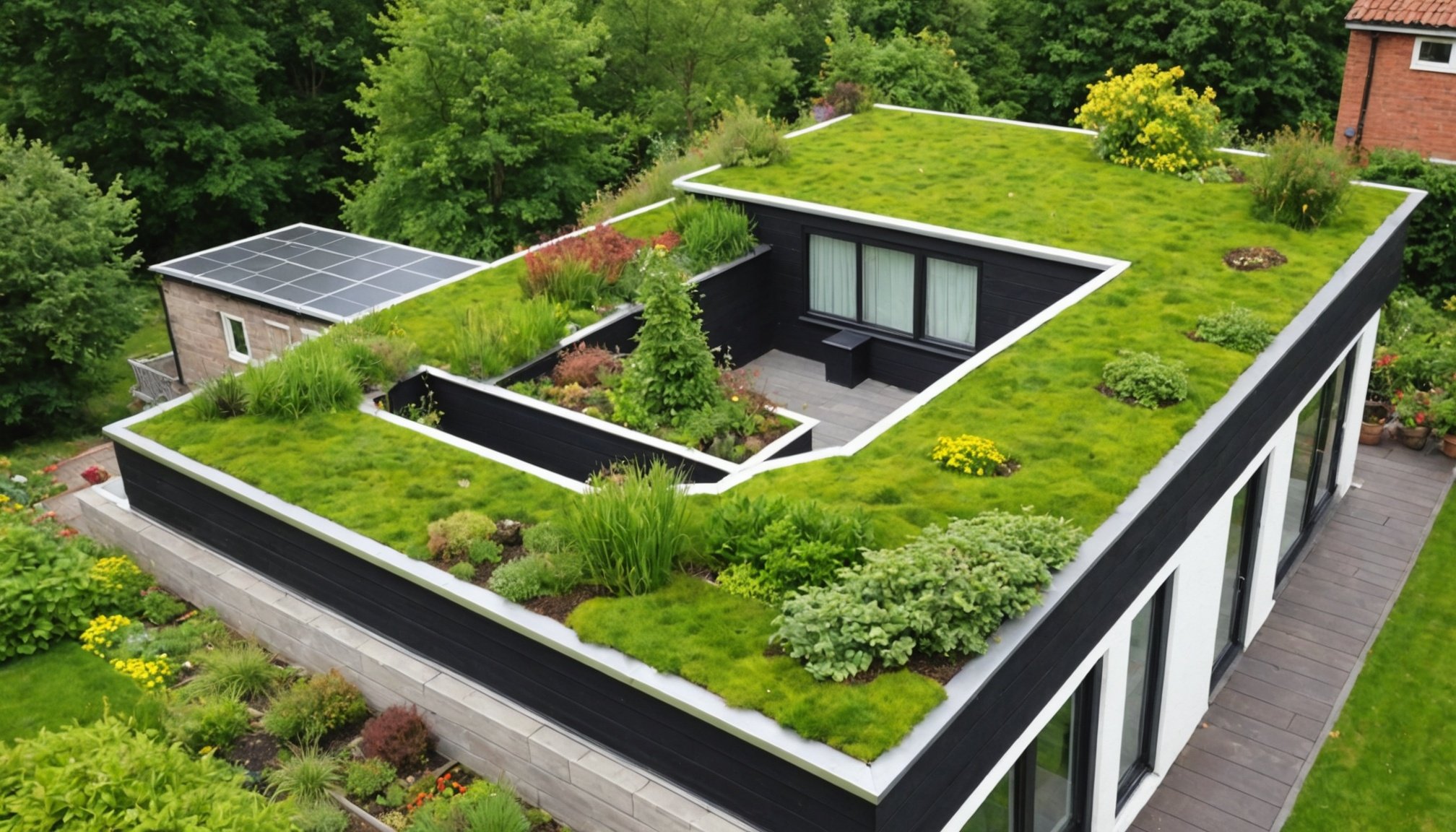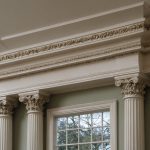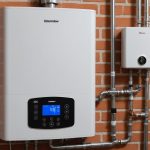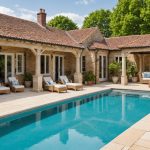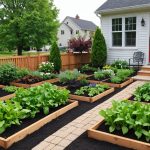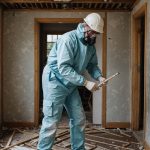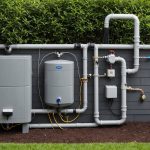Environmental Benefits of Green Roofs
Green roofs have emerged as a sustainable solution to mitigating the environmental impact of urbanization. Their unique role in enhancing urban biodiversity is particularly noteworthy. By creating habitats for various flora and fauna, green roofs offer a sanctuary that mimics natural ecosystems. This not only supports diverse species but also enriches the ecological fabric of urban areas.
In terms of stormwater management, green roofs offer significant advantages. Their vegetation layers act as natural sponges, absorbing rainwater and reducing runoff. This mitigates the risk of flooding in densely populated areas and eases the burden on urban drainage systems. Furthermore, green roofs help combat the urban heat island effect, which is a common challenge in cities. The plants and soil absorb heat, providing a natural cooling effect and contributing to a more comfortable urban climate.
A découvrir également : Maximize Your Garden’s Potential: A Step-by-Step Guide to Brewing Compost Tea at Home in the UK
The carbon footprint of buildings can also be effectively reduced through the installation of green roofs. The vegetation absorbs carbon dioxide, a key greenhouse gas, converting it into oxygen through photosynthesis. This process not only purifies the air but also contributes to the overall reduction of emissions in urban environments, showcasing the multifaceted environmental benefits that green roofs provide.
Energy Efficiency and Cost Savings
Green roofs are increasingly recognised for their energy efficiency, offering substantial benefits in terms of thermal insulation. By adding a layer of vegetation and soil, they act as a natural protective barrier against temperature fluctuations, enhancing a building’s ability to retain heat during winter and remain cool in summer. This process effectively reduces the dependency on artificial heating and cooling systems, leading to significant heating costs reductions.
A lire en complément : What Are the Top Shade-Loving Vegetable Plants for UK Gardens?
Over time, energy savings from green roofs can result in noticeable financial benefits. For instance, a well-maintained green roof can decrease a building’s annual energy consumption by up to 30%. This reduction not only translates into lower utility bills but also contributes positively towards preserving the environment by lessening carbon emissions.
In addition to the direct energy savings, many regions offer financial incentives and subsidies for green roof installation. These programs can substantially offset initial costs, making such projects more accessible. It’s crucial for property owners to explore local regulations and available support, as these can differ widely. Ultimately, investing in energy-efficient green roofing ensures both economic and ecological rewards, emphasising its practicality and societal value.
Maintenance Considerations
Understanding the maintenance requirements for green roofs is essential for their sustainability and longevity. The effort required for upkeep can vary widely depending on the chosen plant species and the specific design of the roof. Lightweight species often require less maintenance, as they are typically hardy and more adaptable to diverse urban environments. However, regular inspections and care are still necessary to ensure optimal growth and performance.
Selecting the right plant species plays a crucial role in reducing maintenance efforts. Native plants are generally a wise choice, as they are well-adapted to the local climate and conditions, leading to reduced irrigation and fertiliser needs. Additionally, they provide habitat benefits for local fauna, enhancing biodiversity.
For successful plant growth and roof longevity, implementing effective strategies is vital. This includes setting up efficient drainage systems to prevent waterlogging and ensuring appropriate soil depth to support root systems. Integrating an irrigation system can also be beneficial during dry seasons or for more demanding plant types.
Regularly monitoring and managing any weed growth is important to maintain the health of the chosen plants. Moreover, periodic fertilisation, pruning, and checking for pests are part of well-rounded upkeep requirements, promoting a thriving green roof environment.
Legal Regulations and Planning Permissions
Navigating the legal requirements for green roof installations in the UK can initially seem daunting. However, understanding these elements can lead to a smooth installation process and ensure compliance with local authorities. It’s essential to consult the relevant building regulations to establish what specific conditions apply to your project. These regulations typically focus on structural support, insulation, and ensuring the roof can effectively manage additional load.
When it comes to securing planning permissions, it’s crucial to understand that these permissions can vary significantly depending on your location and the scope of your project. For residential applications, the process often requires documentation detailing how the green roof will contribute to ecological benefits, aesthetics, or even increased building energy efficiency. This documentation helps guide the local authority’s decision and highlights the advantages of implementing a green roof.
Furthermore, the impact of local council guidelines cannot be overstated. These guidelines play a pivotal role in influencing design choices. Different councils may have specific preferences or additional requirements, such as plant types or drainage systems used. It’s wise to engage with local planners early on, ensuring your plans align with these preferences to avoid complications. Proactively adhering to these regulations facilitates a legal and efficient installation process.
Aesthetic Improvements and Property Value
Green roofs offer a range of aesthetic benefits, turning otherwise dull rooftops into vibrant green landscapes. These installations can transform the appearance of a building, providing an inviting visual appeal. By integrating various plants, architects can create unique, eye-catching design possibilities that stand out in urban environments.
The property value often sees an increase when a green roof is part of the building’s structure. This enhancement comes from not only the aesthetic improvement but also the added benefits of energy efficiency and environmentally friendly features. These improvements make properties more attractive to potential buyers, thereby boosting marketability.
Successfully blending a green roof into the existing landscape integration can further elevate a property’s appeal. By choosing suitable plant species and design elements, green roofs can seamlessly connect with surrounding natural or architectural features. This integration provides not just a beautiful outlook but also a harmonious connection with the environment.
The unique appeal of green roofs is an ideal selling point. A property boasting this feature tends to stand out in real estate listings. Purchasers and tenants often value the combination of sustainability with aesthetic benefits, leading to increased interest and, potentially, a higher property value.
Case Studies and Examples
The UK has seen numerous successful installations of green roofs, serving as a testament to their viability and benefits. These case studies offer valuable insights into the best practices for implementing sustainable roofing solutions.
One notable example is the Biodiversity Roof at the Moorgate Crofts Business Centre in Rotherham. This project has demonstrated significant improvements in biodiversity, through increased habitats for flora and fauna, while also providing effective insulation that reduces heating costs. Similarly, the Greenwings Project in London showcases the benefits of integrating green roofs in urban settings, enhancing air quality, and providing recreational space for residents.
An analysis of these performance outcomes reveals key factors contributing to their success. For instance, attention to plant selection for local climates ensures optimal growth and reduces maintenance. Additionally, incorporating efficient drainage systems is crucial in managing excess water and maintaining roof integrity.
From these examples, we gather best practices such as engaging with local communities to support biodiversity goals and collaborating with experienced professionals during the design phase to anticipate potential challenges. Emphasizing these best practices during planning and implementation can lead to the success seen in these UK projects, where green roofs flourish both environmentally and economically.

